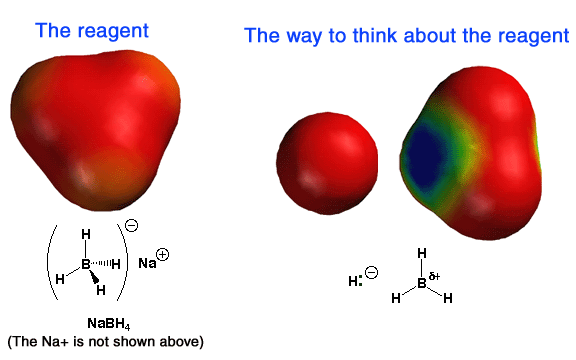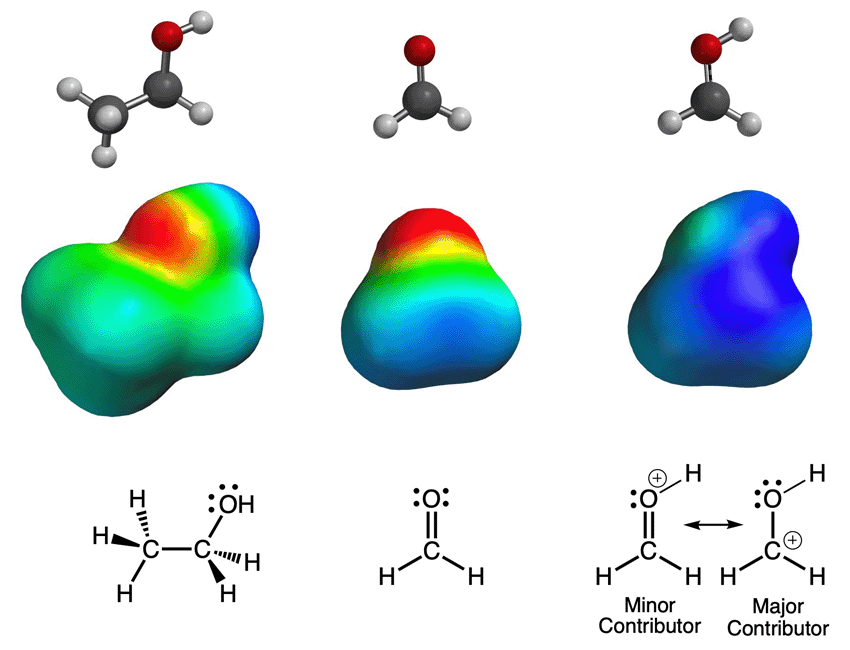Pictures of the Day
1-30-2024

Above are electrostatic potential surfaces that explain a great deal about the reactivity of NaBH4 (and by analogy LiAlH4, with the Li cation replacing the Na cation and Al replacing the B atom). The best way to think about NaBH4 is as an H- atom (a so-called hydride ion) bonded to the Lewis acid BH3, as indicated in the middle panel above on the right. This way of thinking helps explain why the NaBH4 reagent reacts by donating a nucleophilic H- atom to electrophiles such as the carbon atom of carbonyls. On the left is shown the actual structure of BH4-; notice the oveall negative charge (red color). On the right for comparison is BH3, showing a partial positive charge (blue color) on the boron atom and a partial negative charge (red color) on the hydrogen atoms, consistent with the electronegativies of those types of atoms. The partial positive charge on boron explains its Lewis acid (electron pair seeking) properties, i.e. why it forms such a nice complex with the negatively-charged oxygen atom of the tetrahedral intermediate.

Shown above is the ball and still models and electrostatic potential energy surfaces for ethanol, formaldehyde and the protonated form of formaldehyde. Carbonyl groups in aldehydes and ketones are moderate electrophiles and will react spontaneously with strong electrophiles like Grignard reagents or hydride reagents (NaBH4 or LiAlH4). However, weak nucleophiles such as alcohols, are not strong enough to react with an aldhyde or ketone carbonyl directly. Adding catalytic acid leads to protonation of a carbonyl on the oxygen atom. The resulting protonated carbonyl is best thought of as the resonance hybrid of two contributing structures, with the one having the postive charge on carbon being the major contibutor (O is more electronegative than carbon, so carbon will have the majority of the positive charge. Think about it). The protonated carbonyl is a VERY strong electrophile (intense blue color) with the majority of positive charge on the carbon atom (most intense blue color above). Even moderate nucleophiles like an alcohol cannot resist a screaming hot electrophile like a protonated carbonyl, leading to the alcohol O atom making a bond with the protonated carbonyl C atom.


